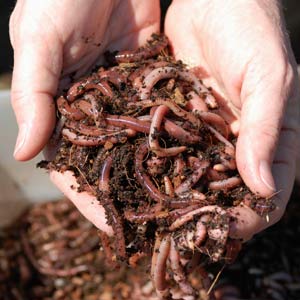Permaculture 101: All about Worms!
Vermiculture Explored and Explained
Vermiculture is the practice of keeping worms for the purposes of super-speed composting and generating what is known as worm-castings, an INCREDIBLE fertilizer for your garden or pots. Worm castings are full of micro-organisms and bacterium that are helpful and healthy for your soil - and when you make your own, it's the cheapest fertilizer you can get. Another helpful by-product is the compost tea that you can drain from your worm bin and use as additional fertilizer for your garden (not as strong or balanced as compost tea you might find in a garden store or online, but it still works!).Keeping worms? Don't they just live in the soil? Well, yes, but worms actually travel quite a ways under ground and if they're not finding delicious food for themselves in and around your garden, then they will move on and you will lose the benefit. For some time now humans have been creating worm bins/enclosures that are ideal for the tiny vermin and in turn they solve a major problem for us...what to do with food-waste?
For longer than I can remember my parents tried different methods of composting. Trenching - digging in your garden and dumping food waste there, once the hole is full you cover it up and the worms in your garden do the rest. Compost Bin - one of the most popular methods for dealing with food-waste, but it often results in other unwanted guests in your yard or garden such as raccoons and rats/mice. Some compost bins deal with with this better by providing a frame and a container that does not touch the ground, but in my experience, the mice are smarter that the air-born compost bins and find a way to get in all the same. With each attempt we continually attracted raccoons, rats and mice and wound up having to set traps which never felt right to my family.

